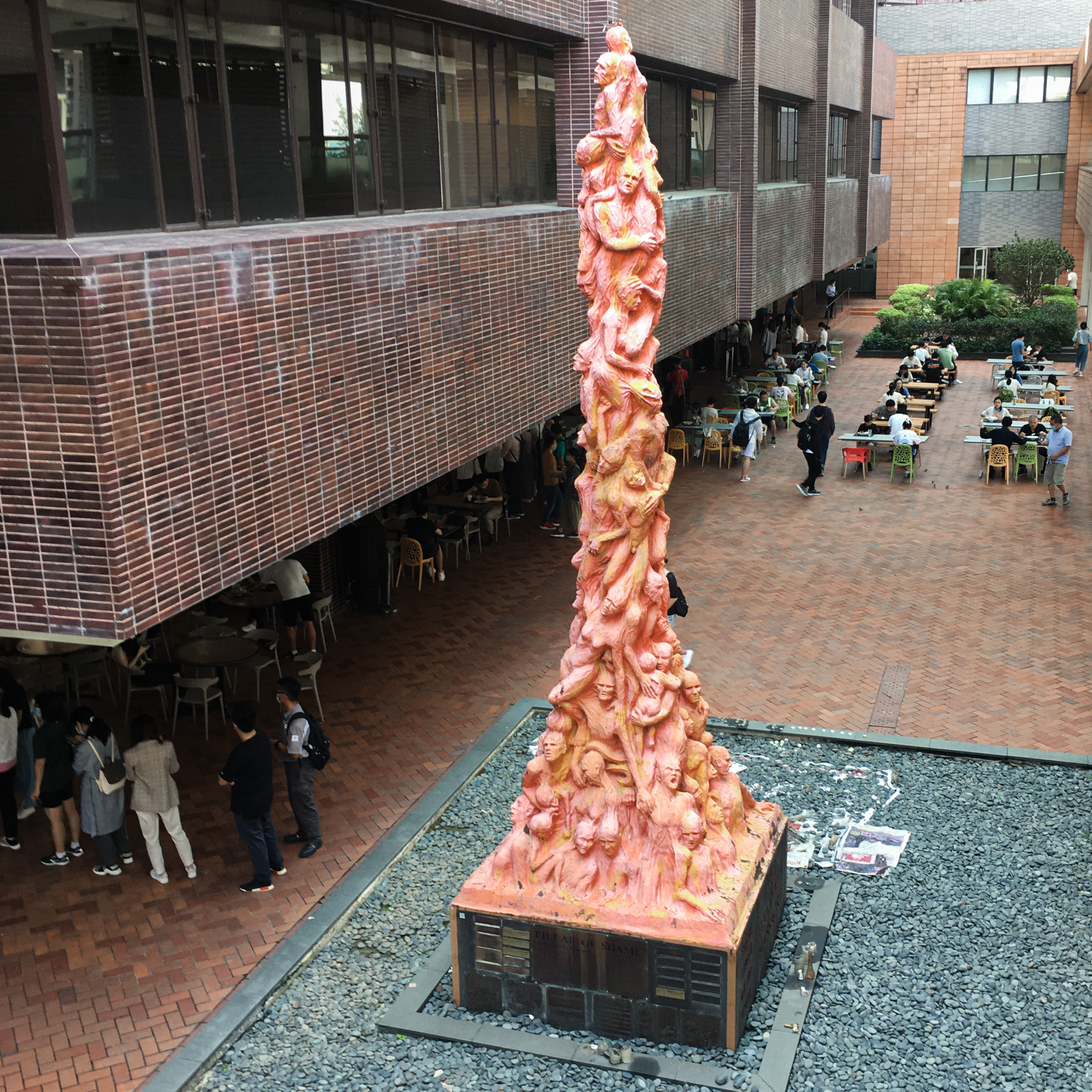News
University of Hong Kong Removes Tiananmen Monument


During the night of December 22, the University of Hong Kong (HKU) dismantled and removed the Pillar of Shame (1996), a memorial to the victims of Beijing’s deadly crackdown on student-led pro-democracy protests in 1989, from its campus. In a statement issued on December 23, the Council of the University of Hong Kong (HKU Council) cited “legal risks to the University based on the Crimes Ordinance enacted under the Hong Kong colonial government” and “potential safety issues resulting from the fragile statue” as the basis of its decision, following consideration of external legal advice at a meeting on December 22. The HKU Council also stressed that since no one had acquired approval from the university to display Pillar of Shame on campus, “the University has the right to take appropriate actions to handle it at any time.” The Pillar was transported to a storage unit early Thursday morning.
Pillar of Shame was situated at HKU for 24 years and was a landmark of the annual June 4 Tiananmen vigil. The sculpture’s removal follows HKU’s unrealized order to the now-disbanded organizers of the vigil, the Hong Kong Alliance in Support of Patriotic Democratic Movements of China, to extract it from the school’s premises by October 13, otherwise, the university warned it “will deal with the Sculpture at such time and in such manner as it thinks fit without further notice.”
Danish artist Jens Galschiøt, who created the Pillar, had loaned it to the Alliance for permanent exhibition in 1997 and remains its owner. Students had moved it onto the Haking Wong Podium of the HKU campus on June 5, 1997, despite disputes with the campus security and police. In a 1998 referendum hosted by the now-dissolved HKU Student Union, the Pillar received a mandate to stay at the school on a permanent basis.
Galschiøt had reached out to HKU to allow him to collect the work in person but received no response. On its removal, he said to the Hong Kong Free Press on Thursday: “It is a disgrace and an abuse and shows that Hong Kong has become a brutal place without laws and regulations such as protecting the population, the arts and private property […] If they destroy my work, I’ll seek compensation and demand the remaining pieces to be returned to Europe.”
Since the passage of the national security law and the beginning of the pandemic, Hong Kong has banned June 4 vigils, citing social distancing regulations. More than 24 politicians and activists have been charged for participating in an unauthorized 2020 event, including the now-dissolved Apple Daily newspaper’s founder Jimmy Lai.
HKU authorities chose a night in December when students were away for winter break to carry out the Pillar’s removal. Floor-to-ceiling white plastic curtains obscured the eight-meter-tall, two-ton, copper, bronze, and concrete sculpture from view at around 11pm on Wednesday, while yellow barriers and security guards prevented public access to the surrounding area, with guards asking the press not to film.







